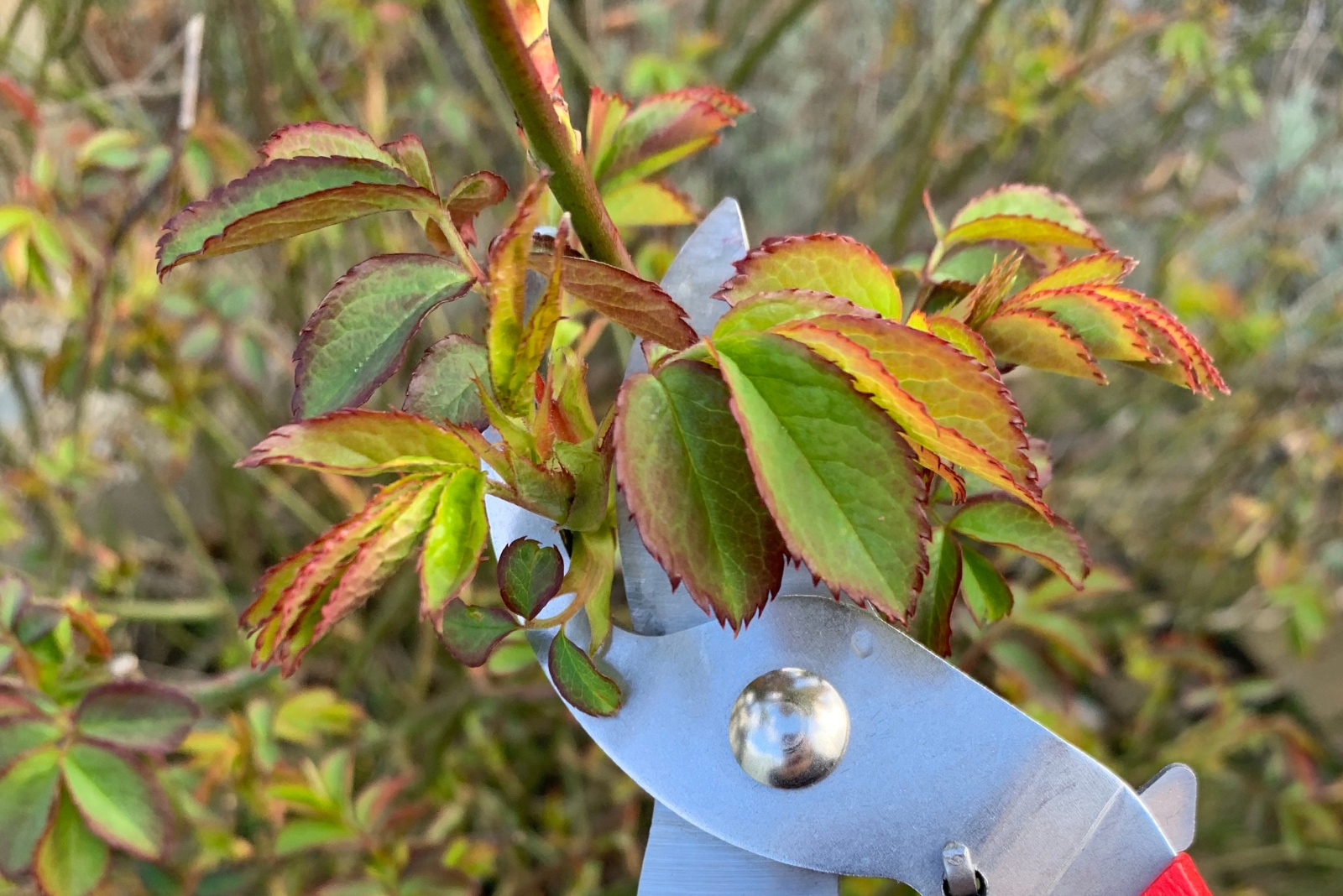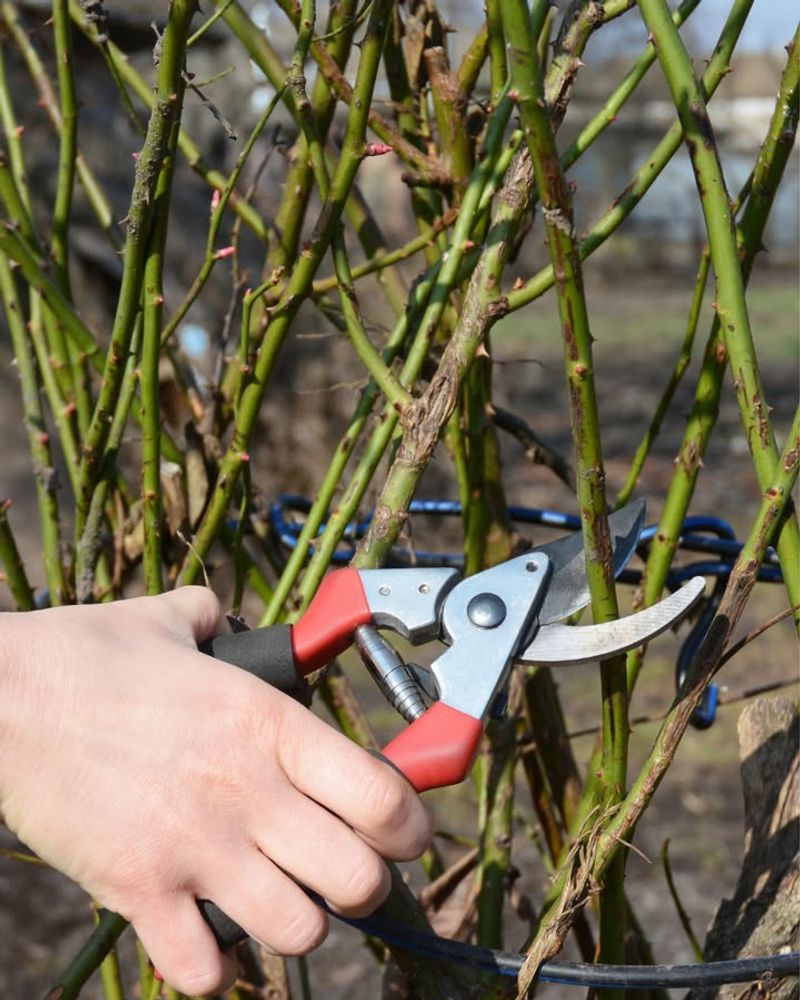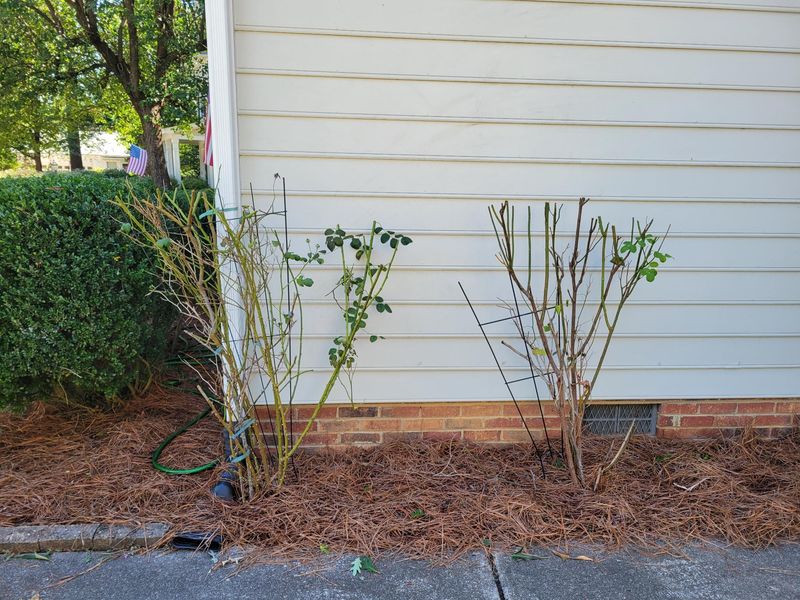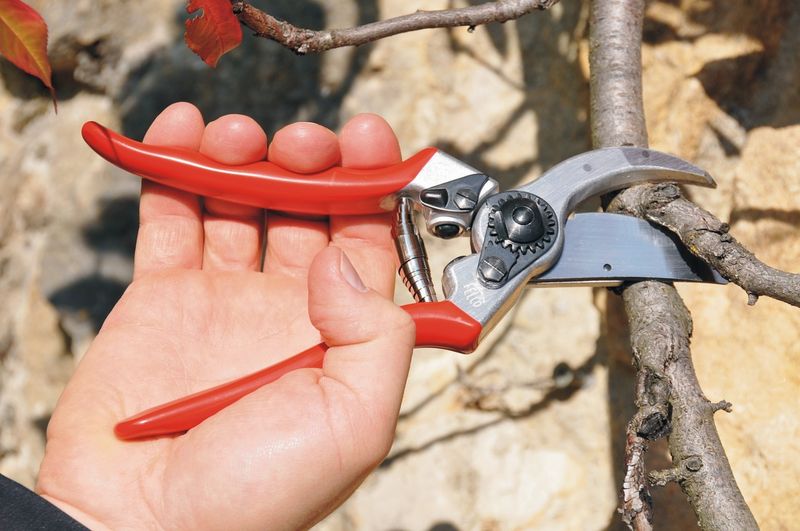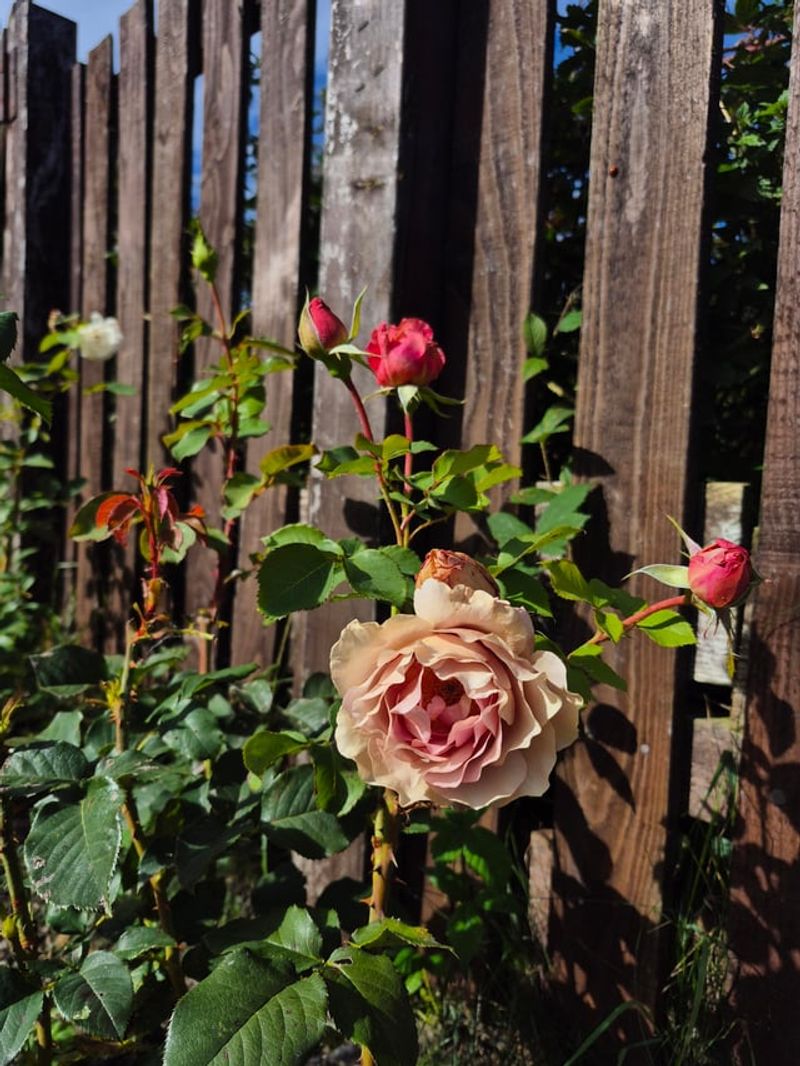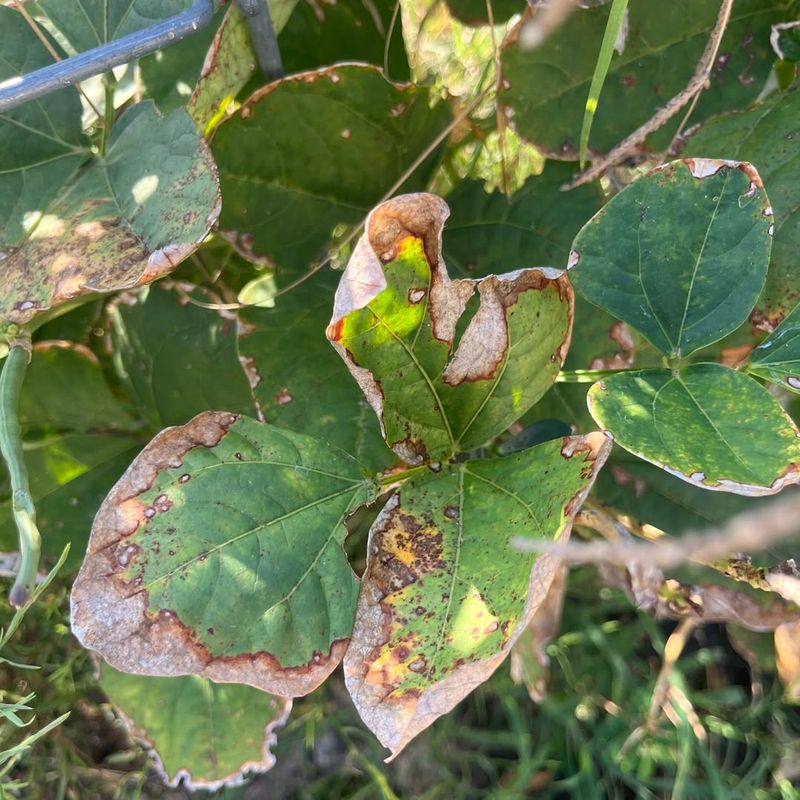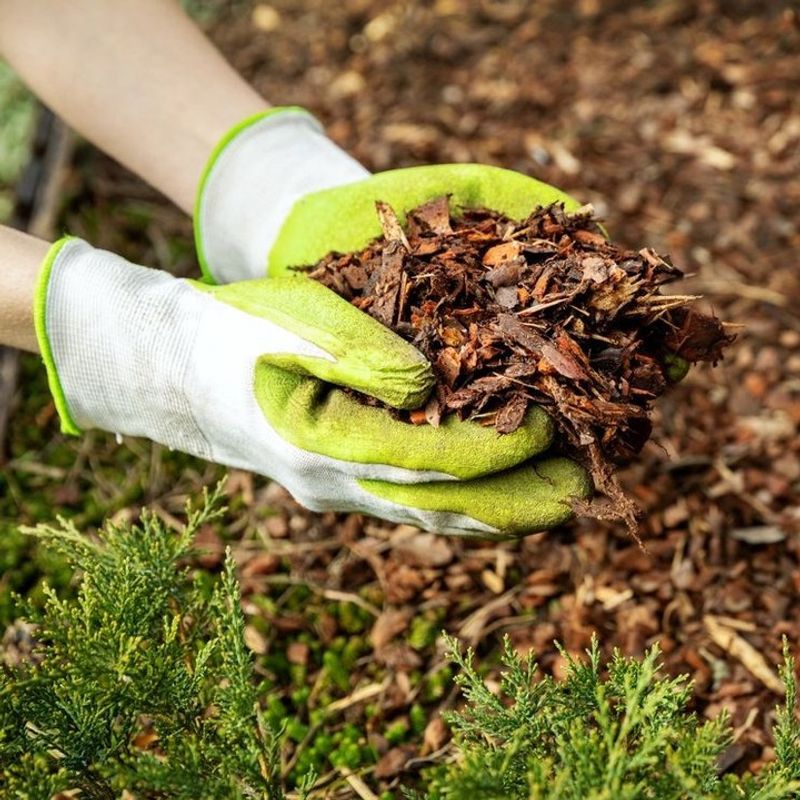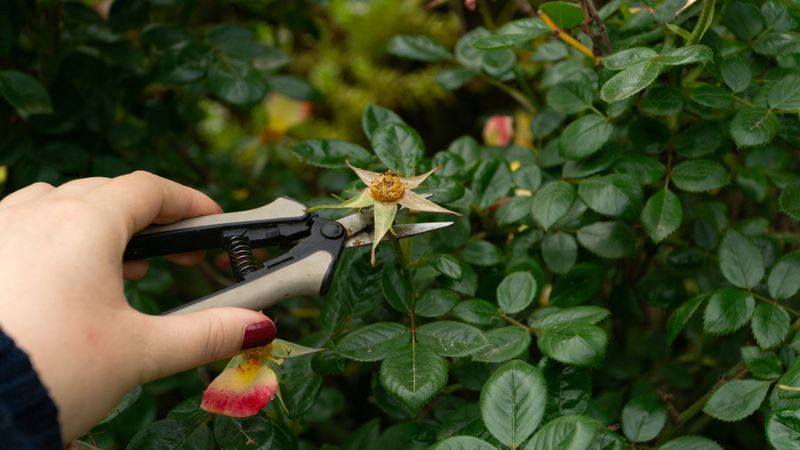Cooler nights and shorter days signal a seasonal shift for rose care in North Carolina. Timing, tool choice, and pruning depth matter because roses react differently to fall cuts than many other shrubs.
A well-planned approach supports strong spring growth, reduces winter stress, and keeps plants healthy year after year.
1. Timing Matters More Than You Think
Cutting roses at the right moment can protect them from winter damage. In North Carolina, aim to prune after the first light frost but before hard freezes arrive, typically between late October and early November.
Pruning too early might encourage new growth that won’t survive cold snaps. Wait until your roses naturally slow down their blooming cycle.
Watching local weather forecasts helps you pick the perfect pruning window for your area.
2. Don’t Cut Too Much Off
Many North Carolina gardeners make the mistake of cutting their roses way too short in fall. Instead of heavy pruning, remove only about one-third of the plant’s height to keep it healthy through winter.
Removing dead or damaged canes is fine, but save major shaping for springtime. Fall pruning should focus on tidying up rather than dramatic cuts.
Leaving enough foliage helps the plant store energy for surviving colder months ahead.
3. Clean Tools Prevent Disease Spread
Before you start snipping away, grab some rubbing alcohol and clean your pruning tools thoroughly. Dirty shears can spread diseases like black spot or powdery mildew from one plant to another.
Wipe down your tools between each rose bush to keep everything sanitary. Sharp, clean blades also make cleaner cuts that heal faster.
Taking this simple step protects your entire North Carolina rose garden from unnecessary infections.
4. North Carolina’s Climate Creates Special Rules
Our state sits in USDA zones 6 through 8, which means winters vary from chilly mountains to milder coastal areas. Gardeners in the mountains should prune earlier and more conservatively than those near the coast.
Coastal gardeners can wait a bit longer since freezes come later. Understanding your specific zone helps you adjust your pruning schedule perfectly.
Check your local extension office for zone-specific advice tailored to your neighborhood.
5. Remove Diseased And Dead Wood First
Start your fall pruning by identifying any canes that look sick, damaged, or completely dead. Black spots, shriveled bark, or hollow stems signal trouble that needs removing immediately.
Cut these problem canes all the way back to healthy white or green tissue. Bag up and throw away diseased material rather than composting it.
Getting rid of sick wood now prevents problems from spreading throughout winter and into next season in North Carolina.
6. Mulch After Pruning For Winter Protection
Once you finish cutting back your roses, add a generous layer of mulch around the base of each plant. Pine straw, shredded leaves, or wood chips work wonderfully for insulation.
Pile mulch about three to four inches deep, but keep it away from touching the canes directly. This protective blanket helps roots stay warm and prevents soil from freezing and thawing repeatedly.
Proper mulching makes a noticeable difference in how well roses survive North Carolina winter.
7. Skip Fertilizing When You Prune
Hold off on adding any fertilizer when you prune roses in fall. Feeding plants now encourages tender new growth that will get zapped by North Carolina winter cold.
Roses need to enter dormancy naturally to survive freezing temperatures. Let them rest without extra nutrients pushing them to grow.
Save your fertilizer for early spring when warm weather returns and your roses wake up ready to bloom again with renewed energy.

